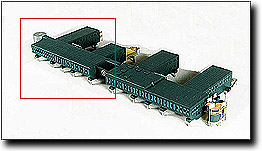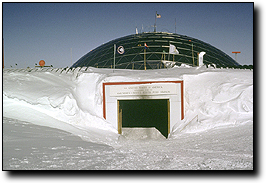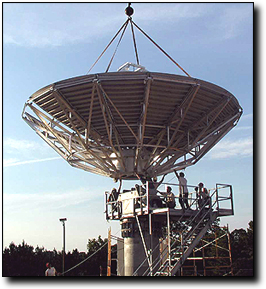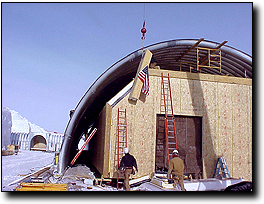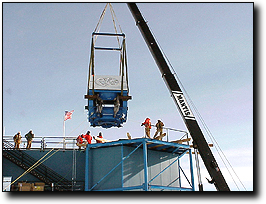 |
|
|
 |
||
|
||||||||||
|
This material is available primarily for archival purposes. Telephone numbers or other contact information may be out of date; please see current contact information at media contacts.
Construction of New South Pole Station Begins
Several major construction projects will begin or be completed during the 2000-2001 Antarctic research season which are significant milestones toward opening a modern and environmentally sound scientific station at the South Pole in 2005. Replacing the aging Amundsen-Scott South Pole Station is a priority for the National Science Foundation (NSF), which operates the U.S. Antarctic Program. Despite the harsh conditions at the bottom of the world and the fact that the supply line to the station is one of the world's longest, the South Pole modernization project is currently on schedule and within its $152.9 million budget, noted Karl Erb, director of NSF's office of polar programs. During the austral summer, construction workers will erect the first portion of the new elevated station and complete safety and environmental upgrades to the station infrastructure. Also this season, a new satellite earth station will be installed at the Pole that will vastly improve the telecommunications links for the community there. Finally, an array of telescopes that will provide new insights into how the universe formed is scheduled to become fully operational this season. Project materials are produced by suppliers across the U.S., moved by ship from Port Hueneme, Calif. to New Zealand and finally flown by the New York Air National Guard from McMurdo Station in Antarctica to the construction site at the Pole. Many materials are test-fitted in the United States to ensure ease of construction on site. The satellite earth station, for example, was assembled in Texas in September, before shipping to Antarctica. Erection of the first steel structures ok will eventually become one of two wings of the new, elevated station at the Pole will begin in November. The sleek, modernistic station will replace the geodesic dome that, since the 1970's, has been the predominant feature of the station. Jerry Marty, who manages construction, operations and maintenance at the South Pole for the U.S. Antarctic Program, noted that while tons of construction cargo still must be shipped to Antarctica to complete the construction, the steel framework that will go up this summer will change the landscape at the Pole -- both literally and figuratively. "The most dramatic change of all will occur this year," he said. "No longer will the Dome be the focal point at the South Pole." A new power plant is scheduled for completion in January that will provide up to one megawatt of electricity at the station for the first time in history. This will complete a multi-year environmental and safety upgrade of existing facilities which also includes construction of a new fuel storage facility and a garage and shop. Also this season, large aluminum "ground shields" will be added to the Degree Angular Scale Interferometer (DASI), an array of 13 microwave antennas has been measuring cosmic background radiation temperature variations in a fairly large area of the sky above South Pole for the past several months. The shields will enhance the telescope's sensitivity. DASI's measurements will help scientists understand the early cosmos, and the "dark matter" that is believed to constitute most of the universe. Finally, a nine-meter satellite dish connecting the Pole with the commercial MARISAT- F2 and NSF's GOE-3 satellites will be installed this season. The system will enable scientists to transfer, rapidly and efficiently, the large quantities of scientific data gathered each day in the year-round work at the South Pole. The new capability will supplement coverage provided by NASA and U.S. Air Force satellites. |
||||||||||
|
|
||||||||||
| |
